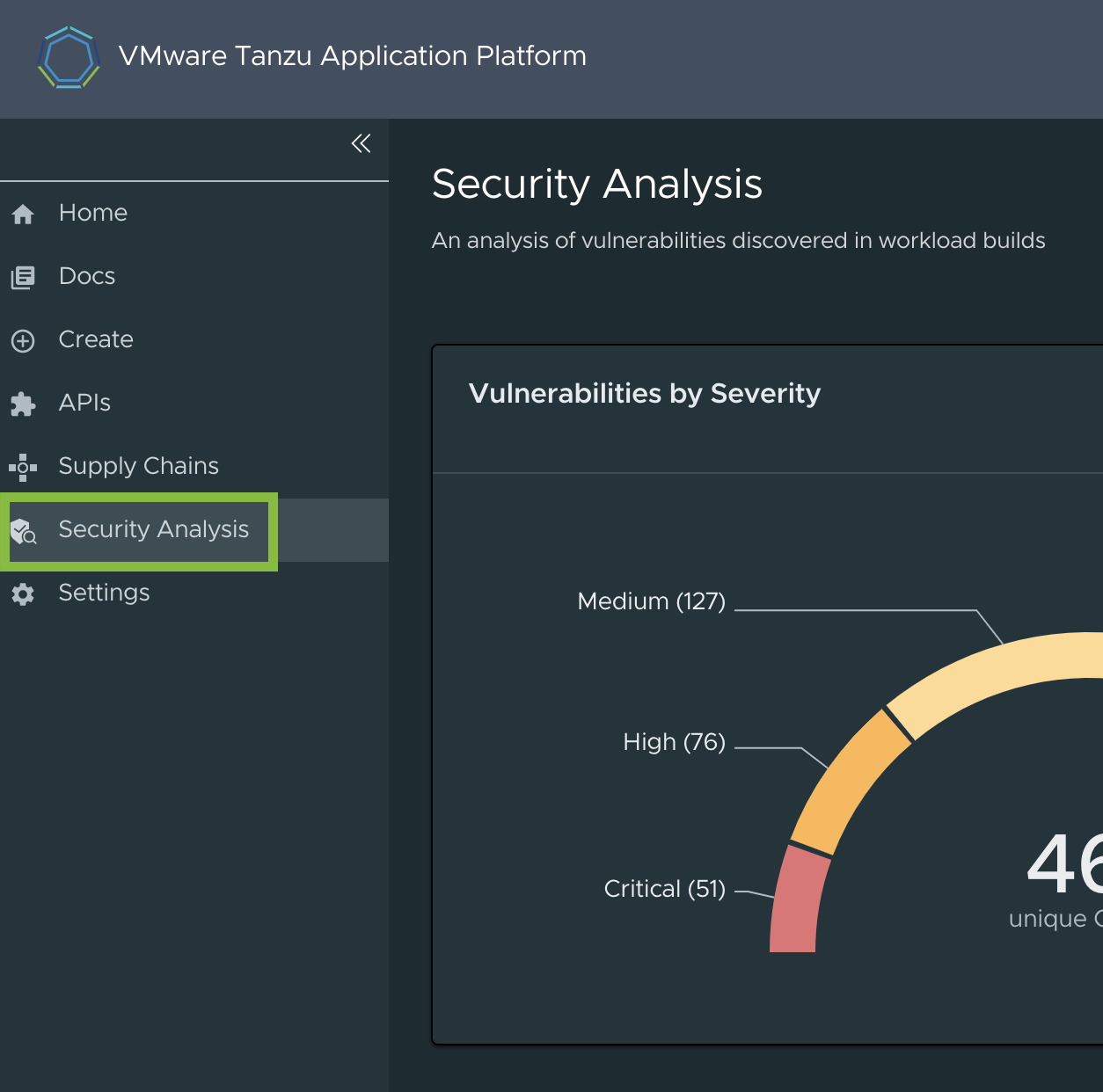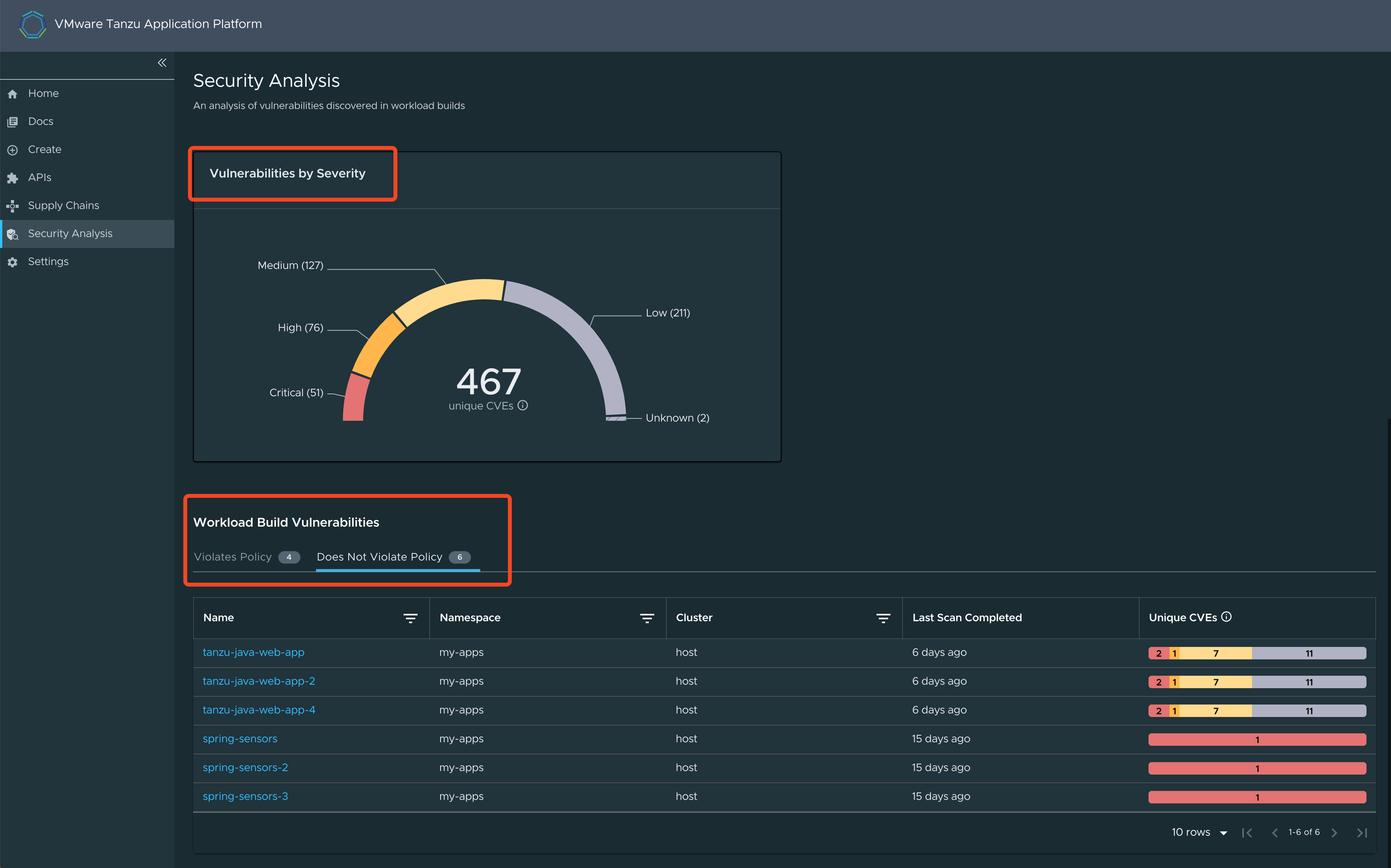Security Analysis in Tanzu Developer Portal
This topic tells you about the Security Analysis plug-in in Tanzu Developer Portal.
Overview
The Security Analysis plug-in summarizes vulnerability data across all workloads running in Tanzu Application Platform, enabling faster identification and remediation of CVEs.
Installing and configuring
The Security Analysis plug-in is installed by default. It is tightly coupled with the Supply Chain Choregrapher plug-in. After installing and configuring the Supply Chain Choreographer GUI plug-in, there is no additional configuration needed for the Security Analysis plug-in.
The Security Analysis plug-in is part of the Tanzu Application Platform Full and View profiles.
Accessing the plug-in
The Security Analysis plug-in is always accessible from the left navigation pane. Click the Security Analysis button to open the Security Analysis dashboard.

Viewing vulnerability data
The Security Analysis dashboard provides a summary of all vulnerabilities across all clusters for single-cluster and multicluster deployments.

The Vulnerabilities by Severity widget quickly counts the number of critical, high, medium, low, and unknown severity CVEs, based on the CVSS severity rating of each CVE.
It includes a sum of all workloads’ source and image scan vulnerabilities. For example, if CVE-123 exists in the latest source scans and image scans of Workload ABC and Workload DEF, it is counted four times.
NoteThe sum includes any CVEs on the allowlist (ignoreCVEs).
The Workload Build Vulnerabilities tables, with the Violates Policy tab and Does Not Violate tab, separate workloads based on the scan policy. For more information, see Enforce compliance policy by using Open Policy Agent The Unique CVEs column uses the same sum logic as described earlier, but for individual workloads.
The sum of a workload’s CVEs might not match the Supply Chain Choreographer’s Vulnerability Scan Results. The data on this dashboard is based on kubectl describe for SourceScan and ImageScan. The data on the Supply Chain Choreographer’s Vulnerability Scan Results is based on Metadata Store data.
Viewing CVE and package details
The Security Analysis plug-in has a CVE page and a Package page. These are accessed by clicking on a workload name, which opens the Supply Chain Choregrapher plug-in. Clicking on the CVE or Package name opens the CVE or Package page, respectively.

The CVE page contains basic information about the vulnerability and includes a table with all affected packages and versions.
The Package page contains basic information about a package and includes a table with all CVEs and the affected package versions.